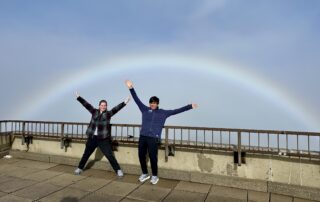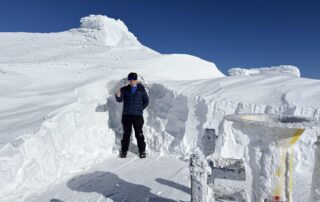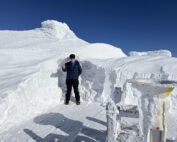Citizen Science Puts Weather Reporting in Your Hands

Ryan Knapp, Weather Observer & Meteorologist
Supporter Spotlight: Colleen Gendron
Supporter Spotlight: Colleen 'Coco' Gendron By Wendy Almeida In the 1970s, Colleen 'Coco' Gendron was introduced to hiking by a close friend’s father, an avid hiker and Appalachian Mountain Club instructor, who shared stories of Mount Washington and the White Mountains. Her first hike up the mountain was
I Did Not Get Blown Off, I Persisted
I Did Not Get Blown Off, I Persisted By Alyssa Bélanger Hello again! To write this farewell blog summarizing my three months on the remote summit of Mount Washington, I decided to take a good bit of time to reflect. I thought about my emotions during
An Experience Worth 1,000 More
An Experience Worth 1,000 More By Mitchell Tsokatos Me and the summit sign once winter really got going. Taken 11/2/25. Unfortunately, my time on Mount Washington as an intern has come to an end. After six weeks of living atop the tallest mountain in
An Experience Worth 1,000 More
An Experience Worth 1,000 More By Mitchell Tsokatos Me and the summit sign once winter really got going. Taken 11/2/25. Unfortunately, my time on Mount Washington as an intern has come to
Supporter Spotlight: AJ Mastrangelo
Supporter Spotlight: AJ Mastrangelo By Wendy Almeida A young AJ on the summit with Rebecca Scholand. AJ Mastrangelo’s relationship with Mount Washington Observatory began long before his internship—or his current career as
Supporter Spotlight: Angelo Decrisantis
Supporter Spotlight: Angelo Decrisantis By Wendy Almeida For Angelo Decrisantis, Mount Washington has been a lifelong connection. It began in 1965, at age 15, on a family drive to the summit. “My first experience





